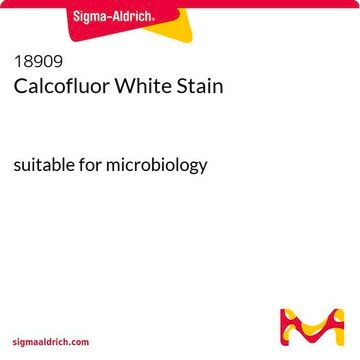The form of the dye, whether as a powder or crystals, should not impact the process of reconstituting Nile Red or most other dyes. For product 72485, both the powder and crystal forms have the same solubility specification. Therefore, either form is acceptable. It's advisable to first use the solvent recommended in a published procedure if following one.
72485
Nile Red
for microscopy
Synonym(s):
Nile Blue A Oxazone
About This Item
Recommended Products
grade
for microscopy
form
crystals
mp
203-205 °C (lit.)
λmax
553 nm
suitability
suitable for microscopy
SMILES string
CCN(CC)c1ccc2N=C3C(Oc2c1)=CC(=O)c4ccccc34
InChI
1S/C20H18N2O2/c1-3-22(4-2)13-9-10-16-18(11-13)24-19-12-17(23)14-7-5-6-8-15(14)20(19)21-16/h5-12H,3-4H2,1-2H3
InChI key
VOFUROIFQGPCGE-UHFFFAOYSA-N
Looking for similar products? Visit Product Comparison Guide
General description
Storage Class Code
11 - Combustible Solids
WGK
WGK 3
Flash Point(F)
Not applicable
Flash Point(C)
Not applicable
Personal Protective Equipment
Choose from one of the most recent versions:
Already Own This Product?
Find documentation for the products that you have recently purchased in the Document Library.
Customers Also Viewed
-
Can the crystal form of Nile Red be used in the same way as the powder form, specifically in terms of using acetone to dissolve and create working solutions?
1 answer-
Helpful?
-
-
How can Nile Red be prepared for staining nanoparticles, and what is the process for staining different particle sizes?
1 answer-
Fat or lipid dyes, such as the Sudan and Nile series, typically stain by dissolving the dye into a solvent with low solubility, followed by further dilution with water for use in most staining protocols. When the dye encounters a fat or lipid, it moves from the solvent with low solubility to the solvent with higher solubility. Nile Red is soluble in DMF, DMSO, heptane, xylene, 1% in acetone, and 0.1% in ethanol. There is no specific procedures for staining nanoparticles. However, if the nanoparticles contain a fat or lipid component, Nile Red is expected to work. As for the particle size in solution, there is no available information.
Helpful?
-
Active Filters
Our team of scientists has experience in all areas of research including Life Science, Material Science, Chemical Synthesis, Chromatography, Analytical and many others.
Contact Technical Service









